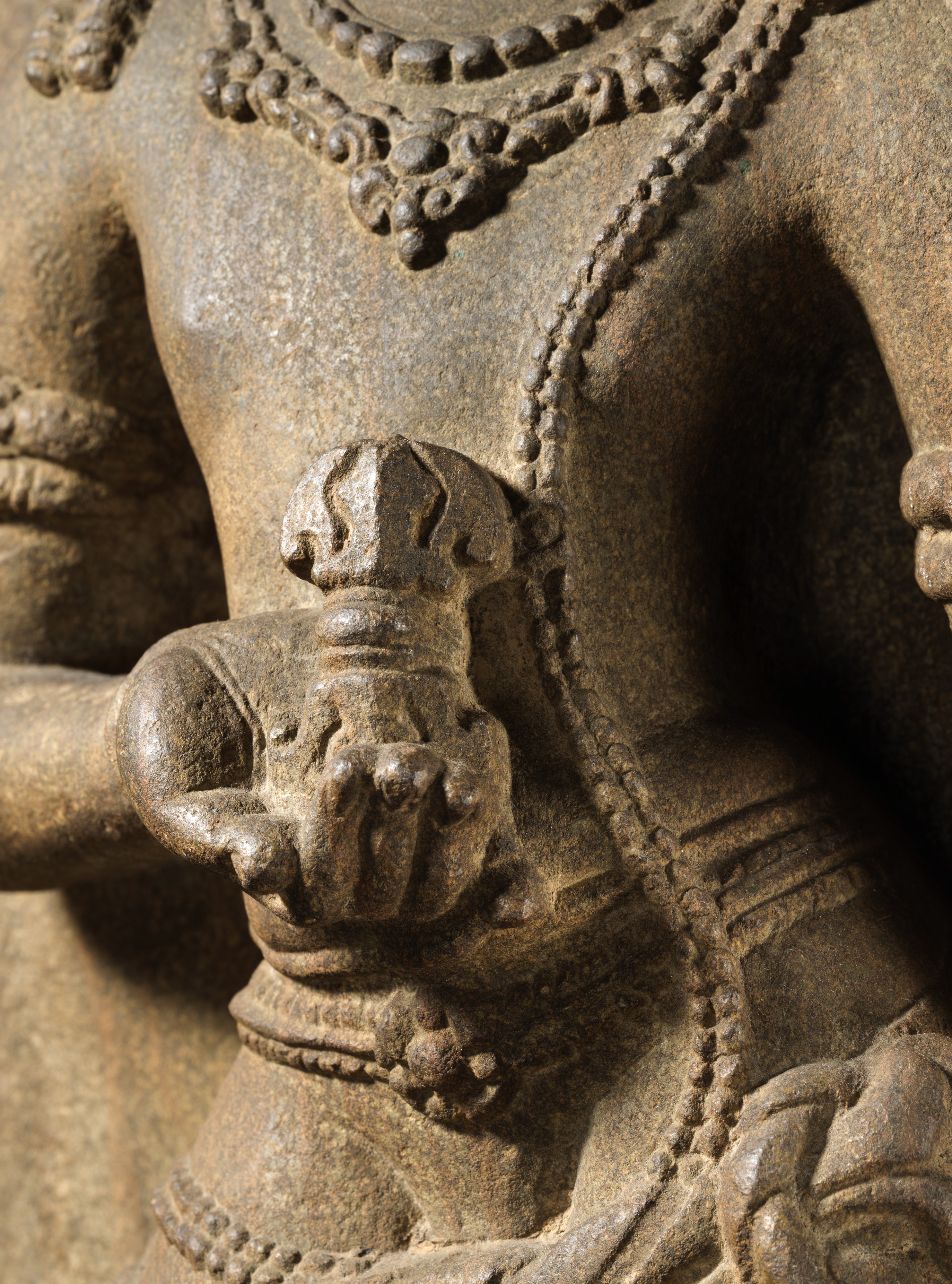Vajrapani, the Thunderbolt-bearing Bodhisattva
Eastern India (Bihar, probably Nalanda)
This is a rare representation of the Buddhist savior Vajrapani from the seventh century or soon after. Vajrapani, the “holder of a thunderbolt” (vajra), shares his origins with the Vedic deity Indra, god of storms. Early in Buddhist iconography, the thunderbolt scepter assumed an independent meaning associated with clarity of pure thought leading to enlightenment. Vajrapani stands flexed holding the vajra in his raised hand, the other resting on the dwarf attendant with a club-axe who seemingly mimics his gestures. Vajrapani has long, unkempt dreadlocks that imply an esoteric aspect to his personality, evocative of Shiva; the large, asymmetrical ear ornaments only strengthen this association, as does the gana-type dwarf guardian. He is best understood as a purusa, a personification of Vajrapani’s “weapon,” a visualization practice very much in vogue in this period in Hindu iconography, especially in Kashmir. A Sanskrit inscription in proto-Bengali script extends down one side of the stele.
Due to rights restrictions, this image cannot be enlarged, viewed at full screen, or downloaded.
This artwork is meant to be viewed from right to left. Scroll left to view more.



